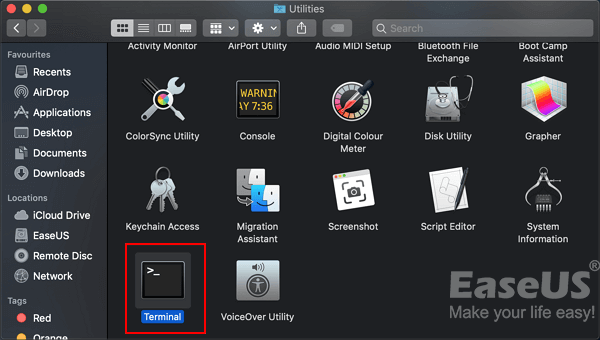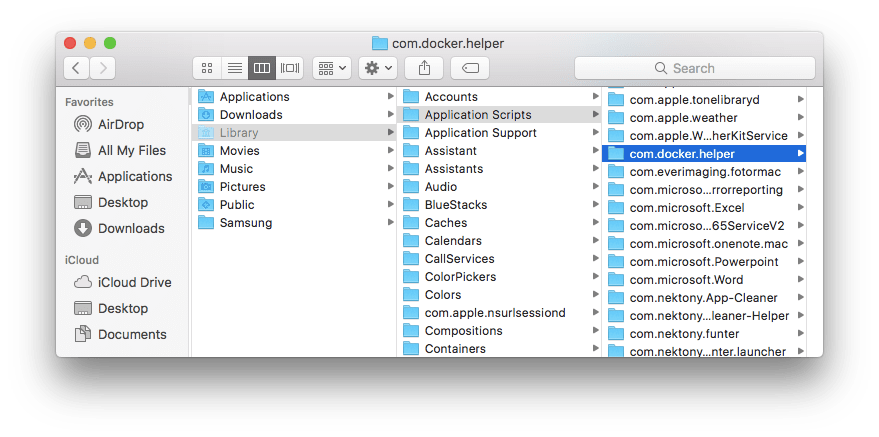Mac Where Is Library Containers Folder
- Mac Where Is Library Containers Folder 2017
- Macos Library Containers Folder
- Mac Where Is Library Containers Folder Download
- Show Library Folder Mac Os
- Mac Where Is Library Containers Folder Free
Mac Where Is Library Containers Folder 2017
Deploy and configure the new OneDrive sync app for Mac. 2/27/2020; 5 minutes to read +2; In this article. This article is for IT administrators managing OneDrive settings in work or school environments.
Docker Desktop on Mac vs. Docker Toolbox Estimated reading time: 8 minutes If you already have an installation of Docker Toolbox, read these topics first to learn how Docker Desktop on Mac and Docker Toolbox differ, and how they can coexist. Transfer Messages History to a New Mac With Library Folders. If your Mac(s) don’t support Messages in iCloud or you don’t want to use it, there is another option. Just copy and move your current User Library/Messages folder to the new Mac! There are lots of ways to move the file, including AirDrop, File Sharing, a handy thumb drive, even. Jan 15, 2020 /Library/Group Containers/group.com.apple.notes/ This folder contains all of your Notes that are stored locally as well as iCloud notes that are cached locally on the Mac, if you wish to backup or recover this data this is the folder you will be working with. Excel for Office 365 for Mac PowerPoint for Office 365 for Mac Excel 2016 for Mac PowerPoint 2016 for Mac Excel for Mac 2011 PowerPoint for Mac 2011 More. Less AutoRecover, a feature that is available in some Office applications, attempts to recover files automatically in the event of.
Estimated reading time: 8 minutesIf you already have an installation of Docker Toolbox, read these topicsfirst to learn how Docker Desktop on Mac and Docker Toolbox differ, and how they cancoexist.
The Docker Toolbox environment
Docker Toolbox installs docker, docker-compose, and docker-machine in/usr/local/bin on your Mac. It also installs VirtualBox. At installation time,Toolbox uses docker-machine to provision a VirtualBox VM called default,running the boot2docker Linux distribution, with Docker Enginewith certificates located on your Mac at$HOME/.docker/machine/machines/default.
Before you use docker or docker-compose on your Mac, you typically use thecommand eval $(docker-machine env default) to set environment variables sothat docker or docker-compose know how to talk to Docker Engine running onVirtualBox.
This setup is shown in the following diagram.
The Docker Desktop on Mac environment
Docker Desktop on Mac is a Mac-native application, that you install in /Applications.At installation time, it creates symlinks in /usr/local/bin for docker anddocker-compose and others, to the commands in the applicationbundle, in /Applications/Docker.app/Contents/Resources/bin.
Here are some key points to know about Docker Desktop on Mac before you get started:
Docker Desktop uses HyperKit instead of Virtual Box. Hyperkit is a lightweight macOS virtualization solution built on top of Hypervisor.framework in macOS 10.10 Yosemite and higher.
When you install Docker Desktop on Mac, machines created with Docker Machine are not affected.
Docker Desktop does not use
docker-machineto provision its VM.The Docker Engine API is exposed on asocket available to the Mac host at/var/run/docker.sock. This is thedefault location Docker and Docker Compose clients use to connect tothe Docker daemon, so you can usedockeranddocker-composeCLI commandson your Mac.
This setup is shown in the following diagram.
With Docker Desktop on Mac, you only get (and only usually need) one VM, managed by Docker Desktop. Docker Desktop automatically upgrades the Docker client and daemon when updates are available.
Also note that Docker Desktop can’t route traffic to containers, so you can’tdirectly access an exposed port on a running container from the hosting machine.
If you do need multiple VMs, such as when testing multi-node swarms, you cancontinue to use Docker Machine, which operates outside the scope of Docker Desktop. SeeDocker Toolbox and Docker Desktop coexistence.
Setting up to run Docker Desktop on Mac
Check whether Toolbox DOCKER environment variables are set:
If this command returns no output, you are ready to use Docker Desktop.
If it returns output (as shown in the example), unset the
DOCKERenvironment variables to make the client talk to the Docker Desktop Engine (next step).Run the
unsetcommand on the followingDOCKERenvironment variables tounset them in the current shell.
Now, this command should return no output.
If you are using a Bash shell, you can use unset ${!DOCKER_*} to unset all DOCKER environment variables at once. (This does not work in other shells such as zsh; you need to unset each variable individually.)
Note: If you have a shell script as part of your profile that sets theseDOCKER environment variables automatically each time you open a commandwindow, then you need to unset these each time you want to use Docker Desktop.
If you install Docker Desktop on a machine where Docker Toolbox is installed.
Docker Desktop replaces the docker and docker-compose command lines in/usr/local/bin with symlinks to its own versions.
See also Unset environment variables in the current shellin the Docker Machine topics.
Docker Toolbox and Docker Desktop coexistence
You can use Docker Desktop and Docker Toolbox together on the same machine. Whenyou want to use Docker Desktop make sure all DOCKER environment variables areunset. You can do this in bash with unset ${!DOCKER_*}. When you want to useone of the VirtualBox VMs you have set with docker-machine, just run a eval$(docker-machine env default) (or the name of the machine you want to target).This switches the current command shell to talk to the specified Toolboxmachine.
This setup is represented in the following diagram.
Using different versions of Docker tools
The coexistence setup works as is as long as your VirtualBox VMs provisionedwith docker-machine run the same version of Docker Engine as Docker Desktop.If you need to use VMs running older versions of Docker Engine, you can use atool like Docker Version Manager to manageseveral versions of docker client.
Checking component versions
Ideally, the Docker CLI client and Docker Engine should be the same version.Mismatches between client and server, and host machines you might havecreated with Docker Machine can cause problems (client can’t talk to the serveror host machines).
If you have already installed Docker Toolbox, and theninstalled Docker Desktop, you might get a newer version of the Docker client. Run docker version in a command shell to see client and server versions. In this example, the client installed with Docker Desktop is Version: 19.03.1 and the server (which was installed earlier with Toolbox) is Version: 19.03.2.
Also, if you created machines with Docker Machine (installed with Toolbox) thenupgraded or installed Docker Desktop, you might have machines running differentversions of Engine. Run docker-machine ls to view version information for themachines you created. In this example, the DOCKER column shows that each machineis running a different version of server.

You might also run into a similar situation with Docker Universal Control Plane (UCP).
There are a few ways to address this problem and keep using your oldermachines. One solution is to use a version manager likeDVM.
Migrating from Docker Toolbox to Docker Desktop on Mac
Docker Desktop does not propose Toolbox image migration as part of itsinstaller since version 18.01.0. You can migrate existing DockerToolbox images with the scripts described below. (This migrationcannot merge images from both Docker and Toolbox: any existing Docker image isreplaced by the Toolbox images.)
Run the following shell commands in a terminal. You need a workingqemu-img; it is part of the qemu package in both MacPorts and Brew:
Macos Library Containers Folder
First, find your Toolbox disk images. You probably have just one:~/.docker/machine/machines/default/disk.vmdk.
Second, find out the location and format of the disk image used by your DockerDesktop.
In this case the format is raw (it could have been qcow2), and the locationis ~/Library/Containers/com.docker.docker/Data/vms/0/.
Then:
Access Hidden Library Menu Option On Mac. Left-click your mouse anywhere on the screen of your Mac. This will reveal the Go Option in the top menu bar of your Mac. Next, click on the Go option in the top menu-bar of your Mac. While you are still on the Go option, press and hold the Option. Show library folder. Mar 12, 2020 There’s a reason that the Library folder on your Mac is tucked away out of site. This all-important folder holds files that your system uses like containers, application scripts, font files, caches, and other types of files. Apple hides this folder by default to. Sep 27, 2016 Open Finder, or just click on the desktop. Then click “Go” in the menu bar, and select “Go to Folder”. You can also skip all this clicking by pressing Command+Shift+G on your keyboard to access the Go to Folder menu. Type /Library in the box and hit Enter. Jan 12, 2020 Launch Terminal, located in /Applications/Utilities. Enter the following command at the Terminal prompt: Press Return. Once the command executes, you can quit Terminal. The Library folder will now be visible in the Finder. Should you ever wish to set the Library folder back to its default hidden. Method 2: Go to the Finder (or desktop). Hold the Option key on your keyboard, and click the Go menu at the top of the screen. With the Go menu open, you'll notice that pressing and releasing Option will display or hide the Library choice in this menu. Select Library from the Go menu (while.

Mac Where Is Library Containers Folder Download
- if your format is qcow2, run
- if your format is raw, run the following command. If you are short on diskspace, it is likely to fail.
Finally (optional), if you are done with Docker Toolbox, you may fullyuninstallit.
How do I uninstall Docker Toolbox?
Show Library Folder Mac Os
You might decide that you do not need Toolbox now that you have Docker Desktop,and want to uninstall it. For details on how to perform a clean uninstall ofToolbox on Mac, see How to uninstall Toolboxin the Toolbox Mac topics.